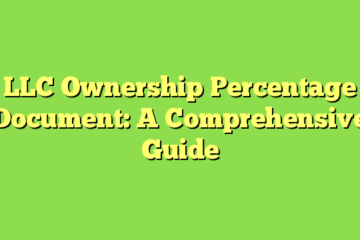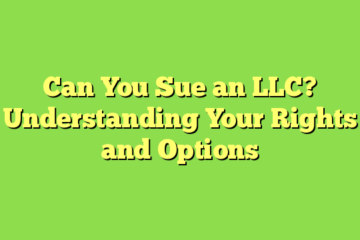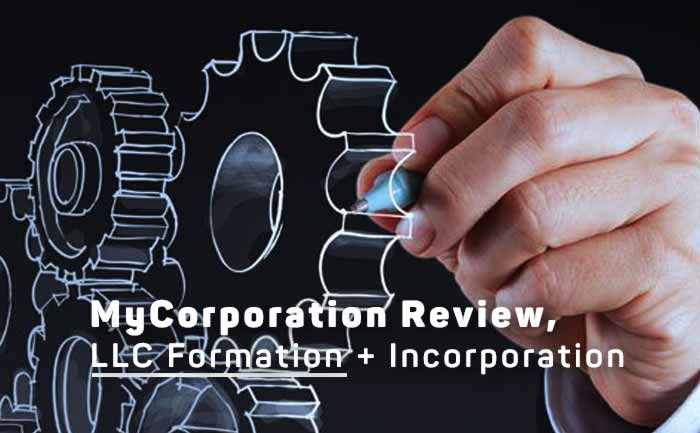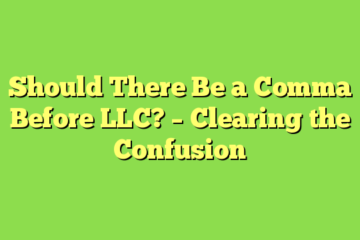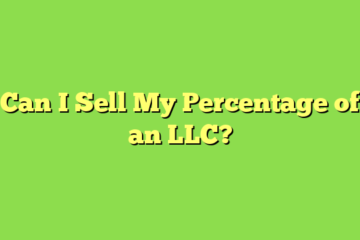If you’re an entrepreneur looking to hit the ground running, buying a limited liability company (LLC) can be an attractive option over starting from scratch. An established LLC offers benefits like an existing customer base, vendor relationships, branding, credit history, and proven business practices.
However, buying an LLC is a major decision that requires careful due diligence. So, to help you get started, here’s a step-by-step guide on how to buy an LLC the right way.
Step 1: Find an LLC for Sale
The first step is locating an LLC that’s available for purchase. This can be trickier than it sounds, as business owners rarely advertise openly that their company is for sale. Some avenues to explore include:
- Networking within your local chamber of commerce or industry trade groups
- Scanning trade publications, business newspapers, and online listings
- Reaching out to older business owners who may be nearing retirement
Step 2: Begin Negotiations and Due Diligence
Once you identify a potential target LLC, it’s time to initiate negotiations and conduct thorough due diligence on the business. At this early stage, you’re simply trying to have an open conversation to learn as much as possible before deciding whether or not to proceed with a purchase.
The current owner should provide you with full access to review any and all books, records, agreements, and financial documents related to the LLC’s operations, assets, debts, revenue streams, expenses, and legal matters. This exhaustive due diligence process allows you to:
- Assess the overall financial health and growth trajectory of the business
- Identify any liabilities, liens, loans, or contractual obligations
- Determine if you can successfully take over existing leases, licenses, and vendor agreements
- Ensure the LLC’s operating agreement doesn’t restrict or prohibit the sale
Carefully comb through tax returns, financial statements, employment contracts, meeting minutes, regulatory paperwork, intellectual property documentation, and any other relevant materials. Consider hiring an attorney and accountant to assist with reviewing complex legal documents and financial records.
Determining the LLC’s Valuation
A critical part of the due diligence process is assessing the fair market valuation of the LLC’s membership interests. An accredited business appraiser or CPA can provide an objective valuation based on factors like:
- The LLC’s assets and liabilities
- Existing loans, leases, and contractual obligations
- Projected future earnings and growth potential
- Industry market data and economic conditions
This valuation will guide your negotiations on an appropriate final purchase price for acquiring the LLC.
Step 3: Draft Formal Purchase Documents
If you decide to proceed with the purchase after conducting due diligence, it’s time to begin drafting formal agreements and defining the structure of the deal:
- Term sheet or memorandum of understanding (MOU) laying out the major tentative terms
- Membership interest purchase agreement if acquiring a stake rather than the full LLC
- Asset purchase agreement if only buying certain assets instead of the entire entity
- Partnership or operating agreement amendments if becoming a new co-owner
- Non-compete, lease assignments, and other ancillary contracts as needed
This is a critical juncture when trusted legal counsel becomes imperative to ensure your interests are fully protected before signing on the dotted line.
Step 4: Execute the Purchase and Transfer Ownership
With all agreements finalized, you’ll now formally execute the purchase and transfer the LLC’s ownership interests and control. Depending on the deal’s structure, this may involve steps such as:
- The current members voting to approve the sale per the operating agreement
- Amending formation documents like the articles of organization
- Paying the final purchase price to the selling members
- Updating registrations with the state, IRS, licenses, permits, and third parties
The selling party should commit to cooperating fully during this transition period to ensure a smooth handover of the business.
Step 5: Post-Closing Tasks
Even after the purchase is complete, you’ll need to tie up some remaining loose ends, like:
- Notifying the IRS of the ownership change by filing Form 8822-B
- Updating the required beneficial ownership information report with FinCEN
- Obtaining a new EIN from the IRS if converting from single- to multi-member LLC
- Applying for any new licenses, permits, or updating existing ones as needed
- Reviewing/renegotiating key vendor contracts, leases, and loan agreements
- Deciding whether to rebrand or maintain the existing LLC name and identity
While purchasing an existing LLC can be complex, following this step-by-step process, being meticulous with due diligence, and engaging professional help will go a long way toward ensuring a successful transition into your new business venture.
The Bottom Line
Buying an existing LLC can allow you to bypass many of the growing pains associated with starting a new business from the ground up. However, it’s crucial to approach the process with care and diligence.
By taking the time to thoroughly evaluate potential acquisition targets, understand all contractual obligations, and negotiate proper valuation and protections, you can confidently purchase an LLC that aligns with your entrepreneurial vision.
With methodical planning and execution, an LLC acquisition can unlock an exciting new phase of small business ownership and open the door to future growth and success.

Alfie Wilson, Esq., is a legal content writer with expertise in business formation, criminal law, veterans disability, family law, DUI law, personal injury, animal welfare, and legal writing. He holds a J.D. from Emory University School of Law and has experience in appellate advocacy and regulatory matters. Alfie’s passion lies in breaking down complex legal topics for a non-lawyer audience. He currently writes for law firms and non-profits on various issues and resides in Arlington, Virginia.

